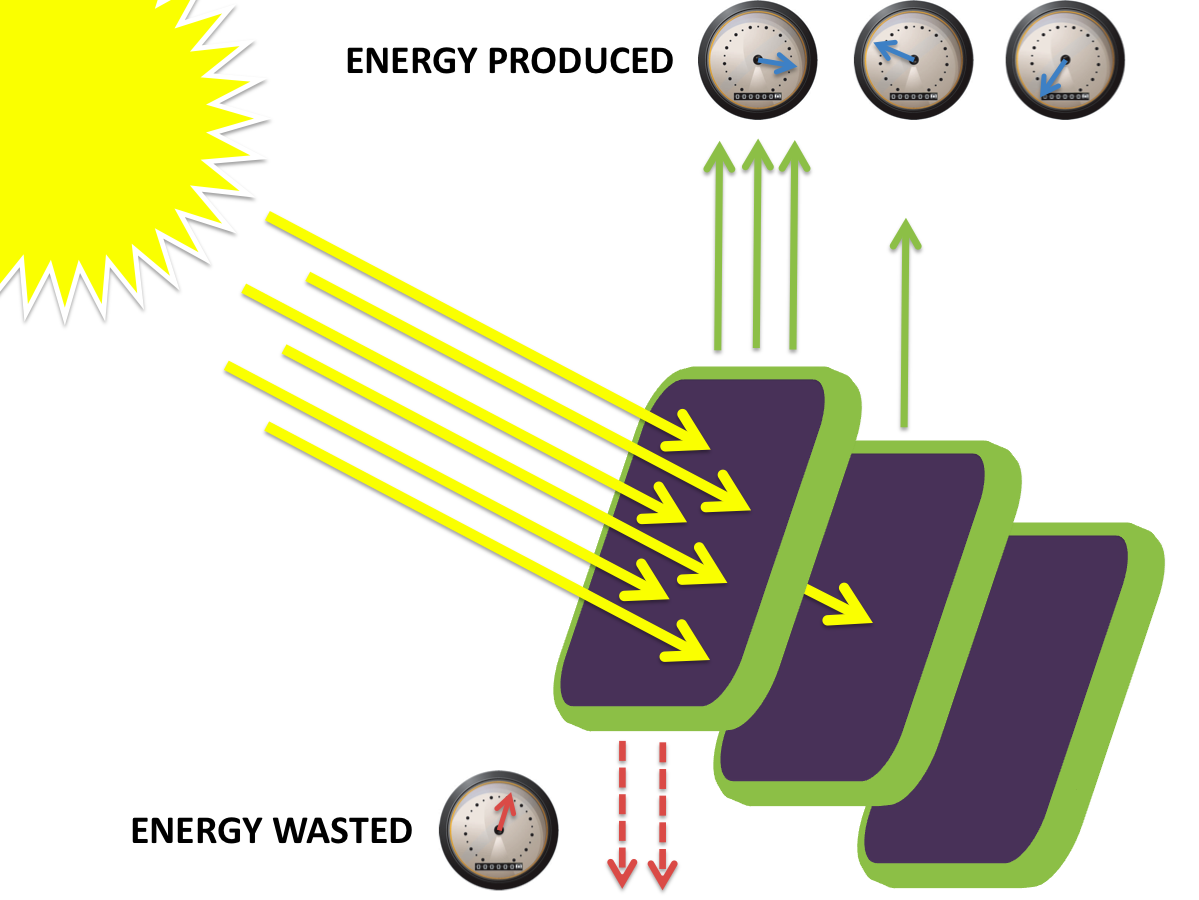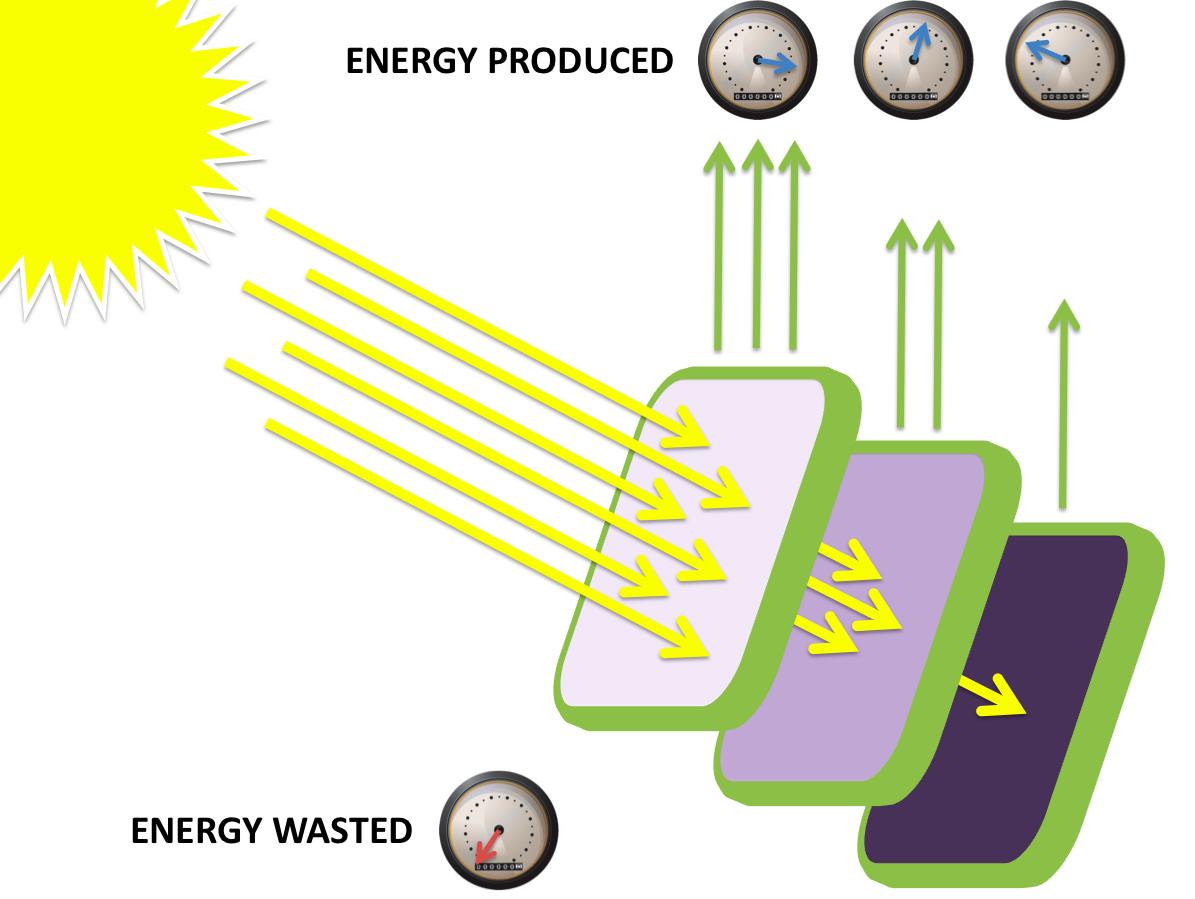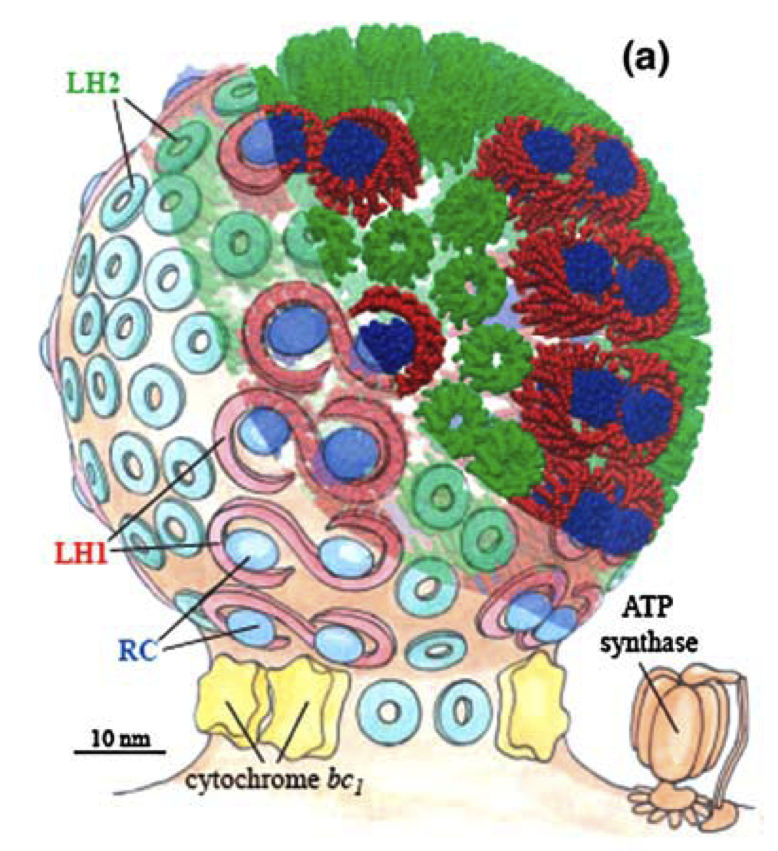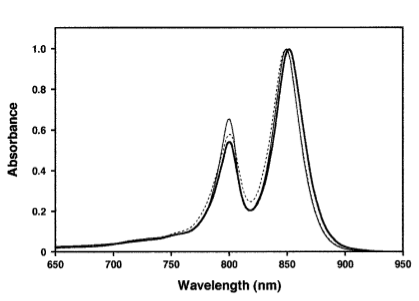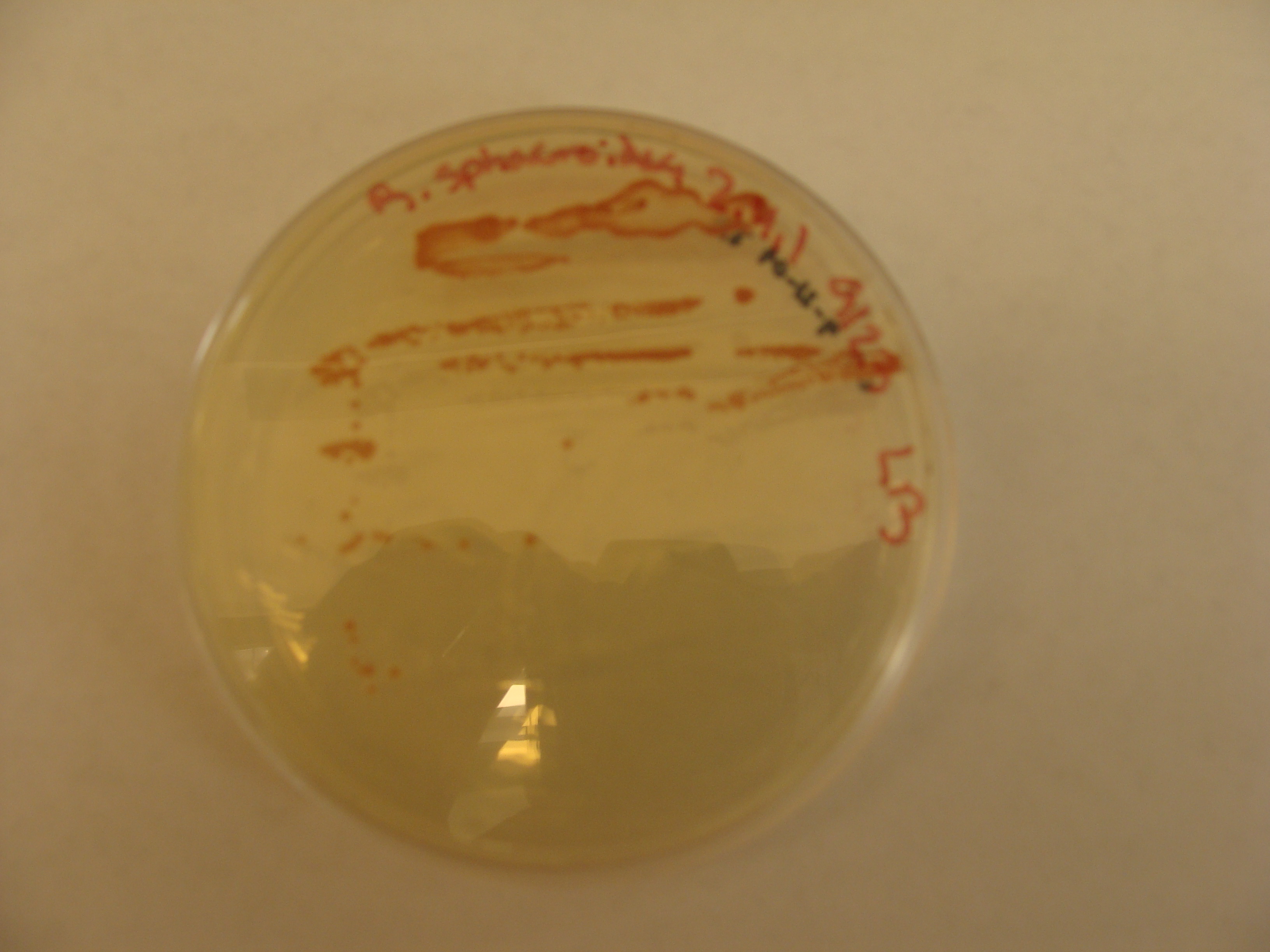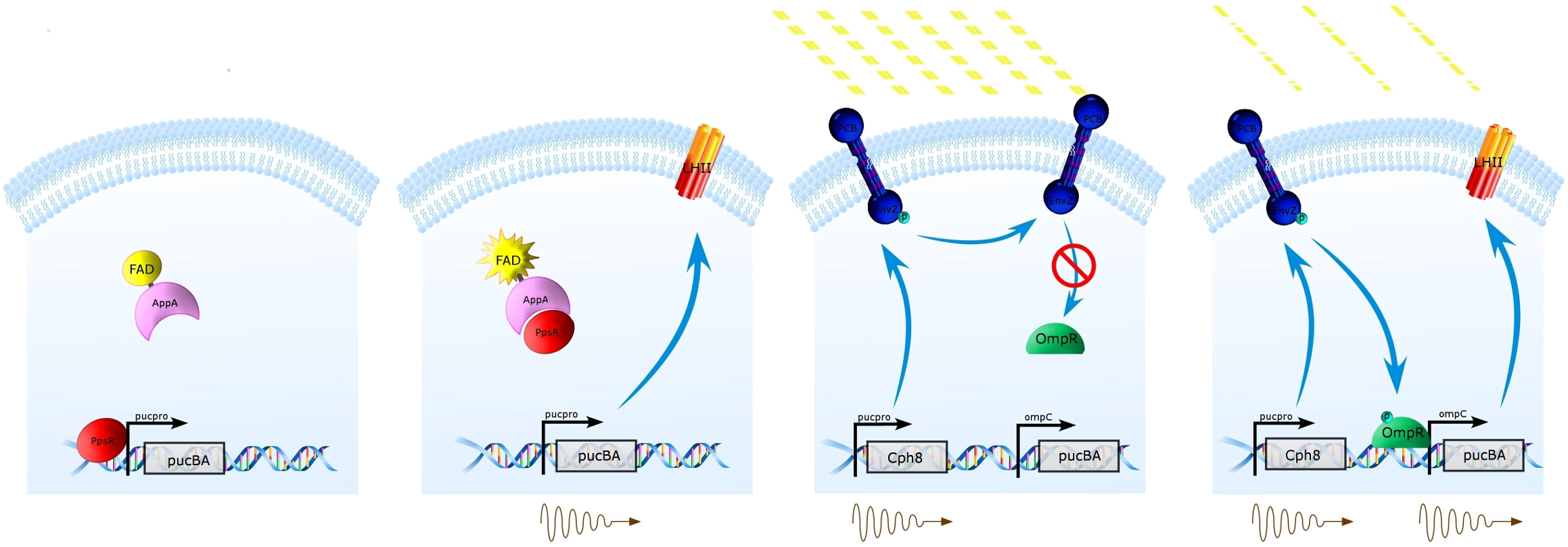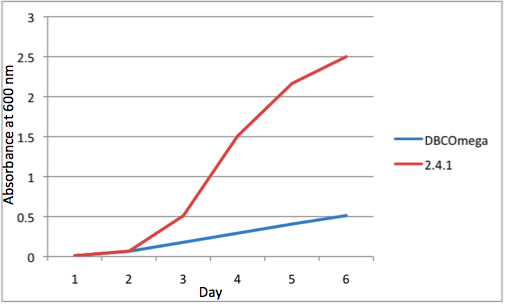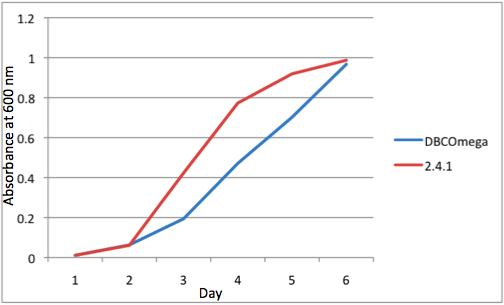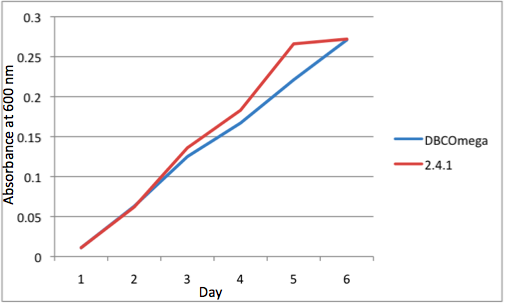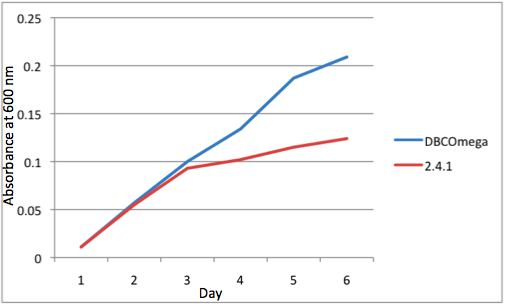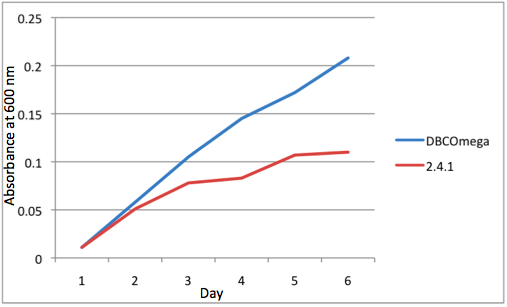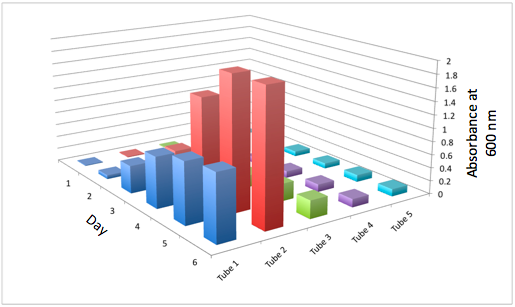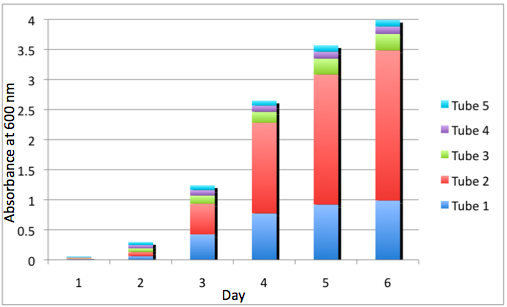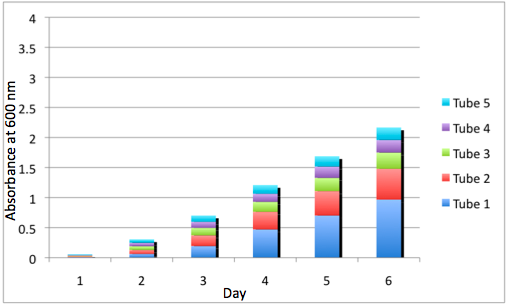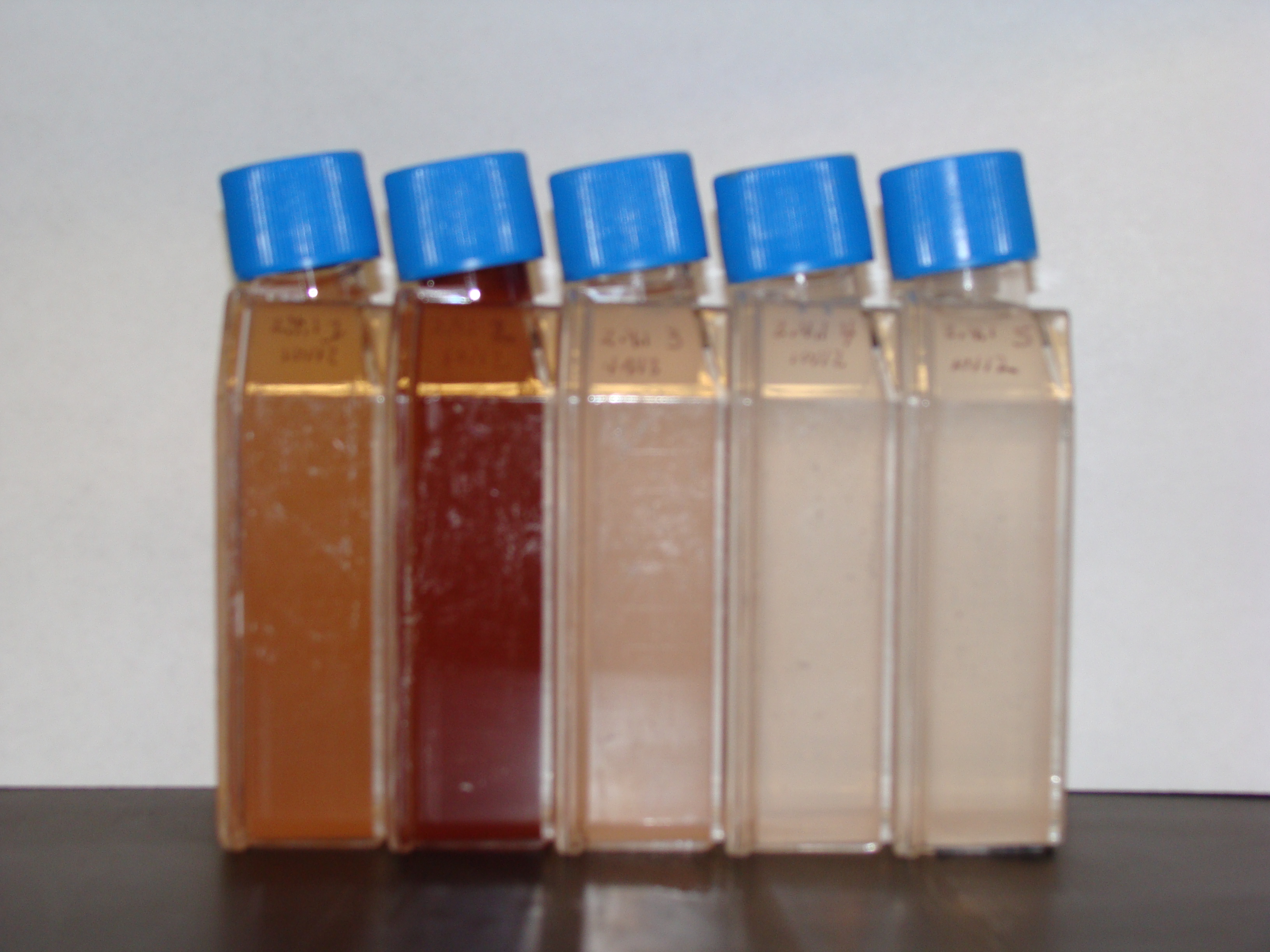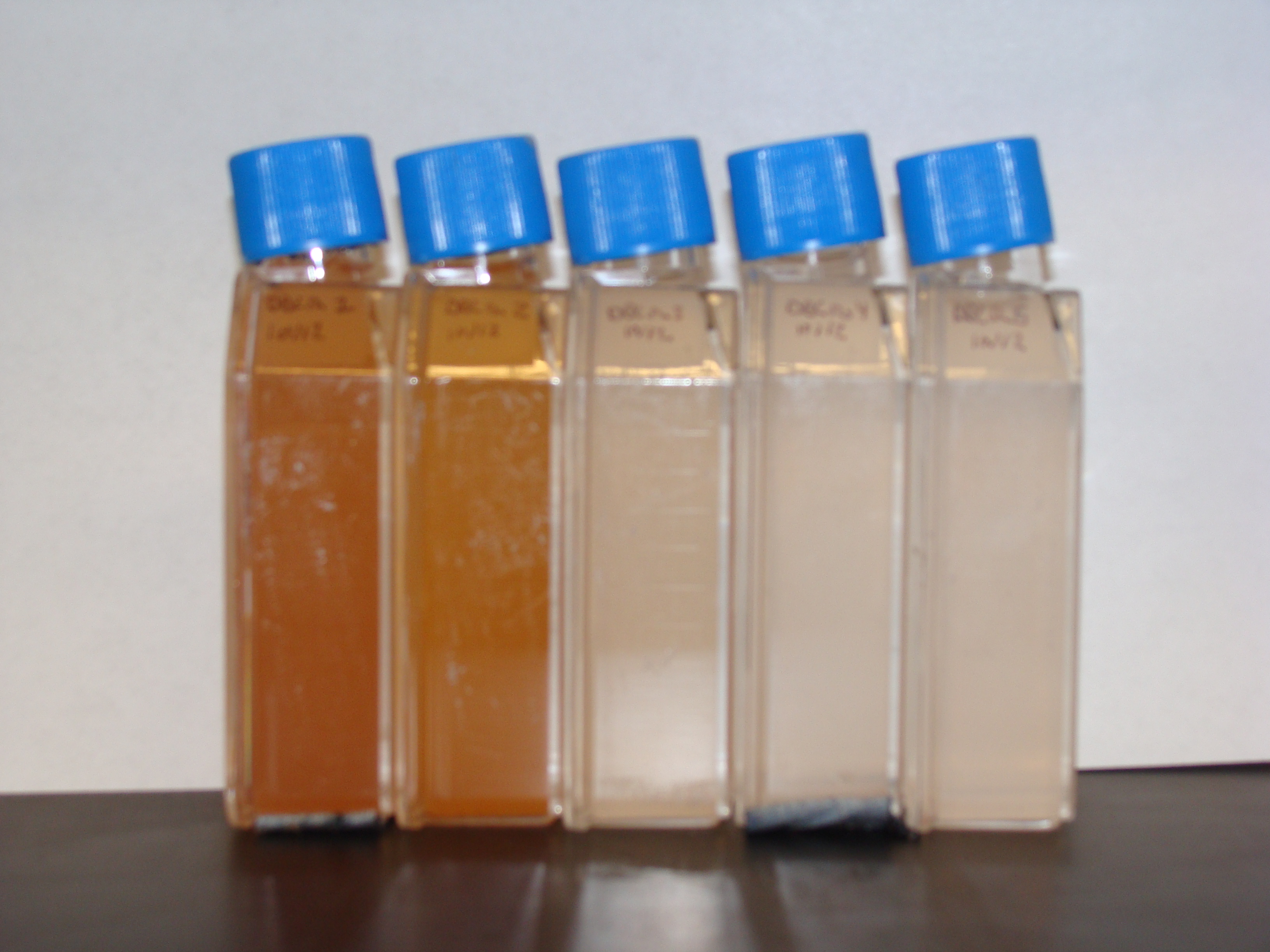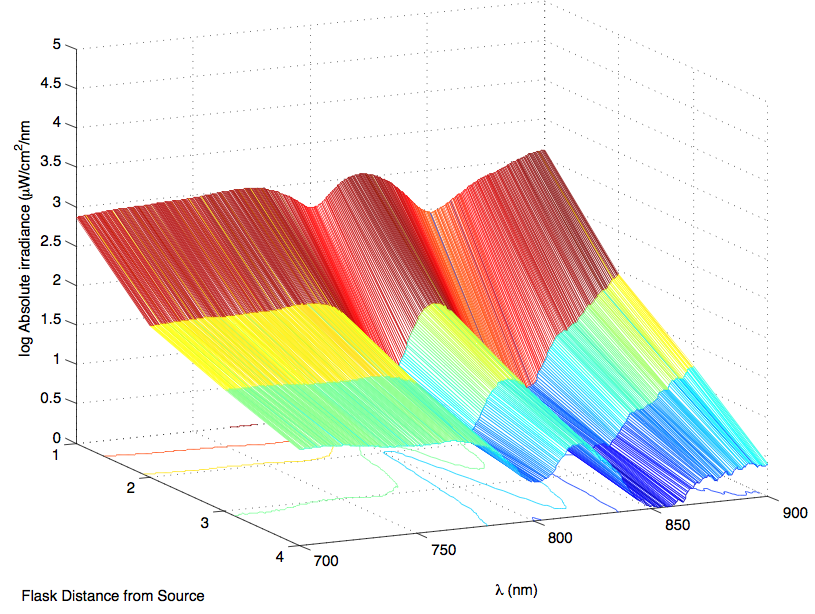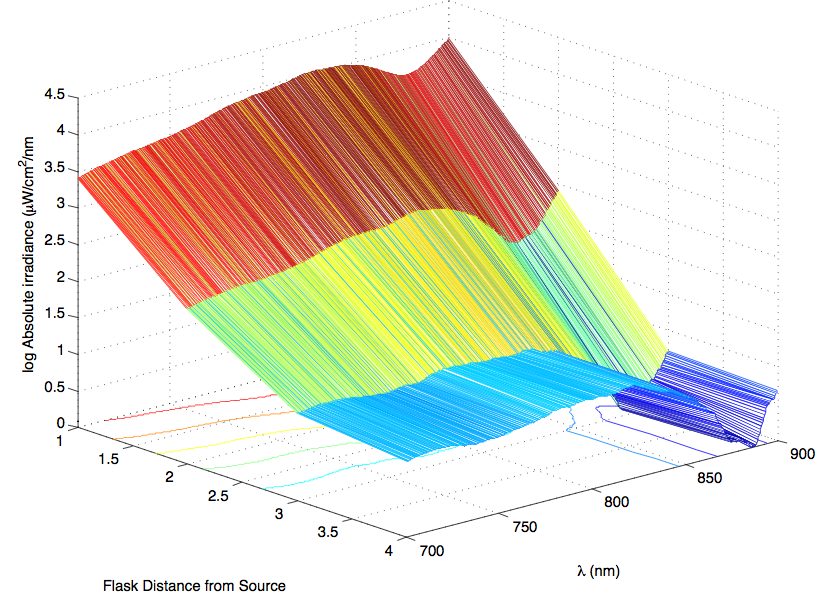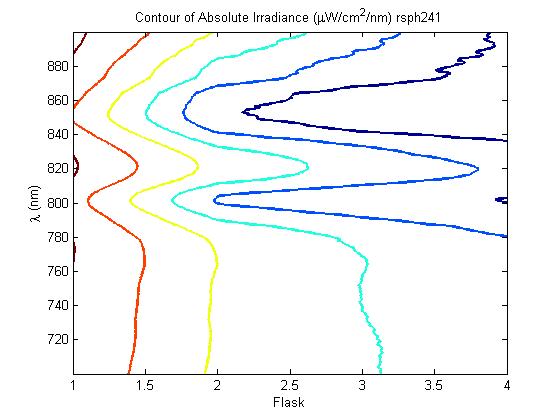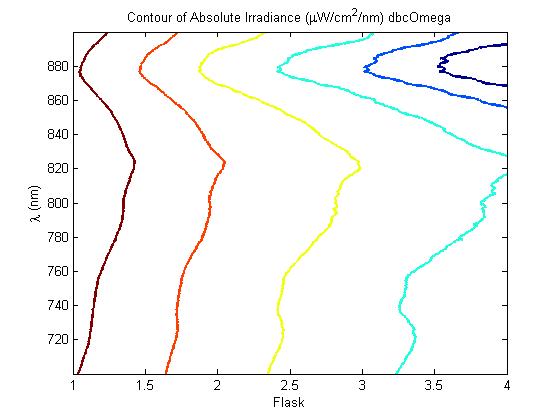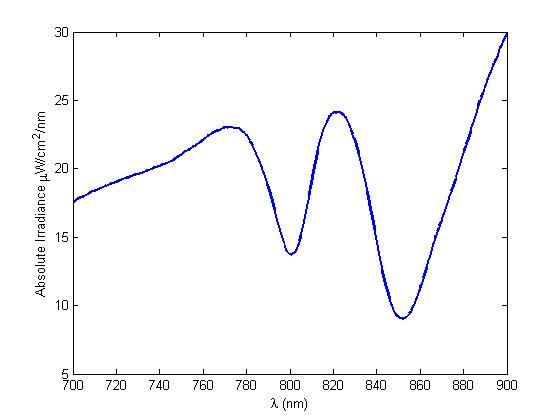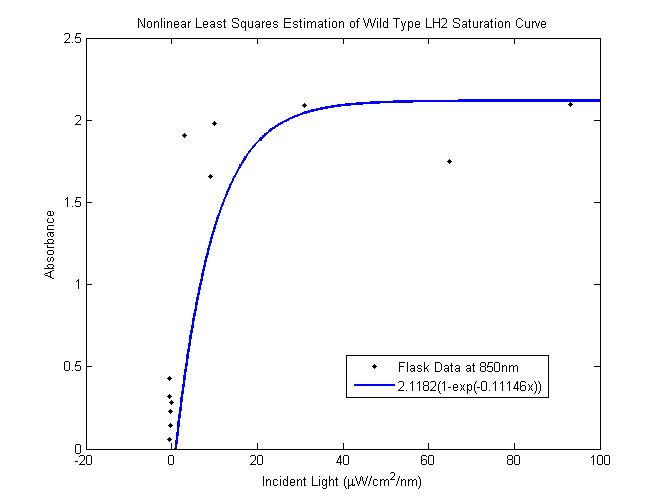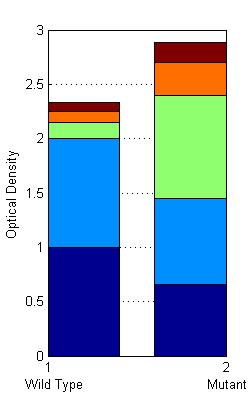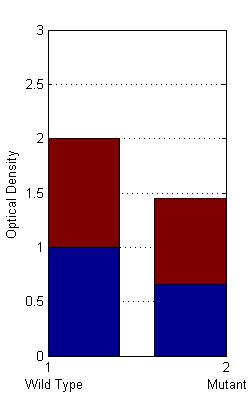Team:Wash U/Project
From 2009.igem.org
(→Conclusion) |
(→Results) |
||
| (16 intermediate revisions not shown) | |||
| Line 38: | Line 38: | ||
== '''Organism''' == | == '''Organism''' == | ||
<font size="2"> | <font size="2"> | ||
| - | ''Rhodobacter sphaeroides'' is a purple Alphaproteobacteria. It is | + | ''Rhodobacter sphaeroides'' is a purple Alphaproteobacteria. It is metabolically flexible: it can grow heterotrophically, via aerobic and anaerobic respiration, as well as phototrophically under anaerobic conditions with light. |
<br> <br> | <br> <br> | ||
| - | ''R. sphaeroides'' is one of the best understood photosynthetic organisms. The photosystem is located in intracytoplasmic membrane invaginations and the main components are the Light Haresting Complex 2 (LH2), Light Harvesting Complex 1 (LH1), and the Reaction Center (RC). These pigment-protein complexes non-covalently bind bacteriochlorophylls and carotenoids. LH1 and RC make up the core complex and are often found in the ratio 1:1. LH2 is more peripheral and naturally ranges in the ratio to LH1/RC of 3.0:1 to 6.7:1 under varying light conditions (Scheuring et al., 2005). LH2 absorbs photons maximally at the wavelengths of 850 and 800 nm and funnels its energy to LH1 and the reaction center for photochemistry. (Scheuring et al., 2005). | + | ''R. sphaeroides'' is one of the best understood photosynthetic organisms. The photosystem is located in intracytoplasmic membrane invaginations and the main components are the Light Haresting Complex 2 (LH2), Light Harvesting Complex 1 (LH1), and the Reaction Center (RC). These pigment-protein complexes non-covalently bind bacteriochlorophylls and carotenoids. LH1 and RC make up the core complex and are often found in the ratio of 1:1. LH2 is more peripheral and naturally ranges in the ratio to LH1/RC of 3.0:1 to 6.7:1 under varying light conditions (Scheuring et al., 2005). LH2 absorbs photons maximally at the wavelengths of 850 and 800 nm and funnels its energy to LH1 and the reaction center for photochemistry. (Scheuring et al., 2005). |
<br><br> | <br><br> | ||
The two subunits of LH2 are coded for by the pucB/A genes and are naturally promoted by the puc promoter. | The two subunits of LH2 are coded for by the pucB/A genes and are naturally promoted by the puc promoter. | ||
| Line 117: | Line 117: | ||
<div style="text-align: left;"> | <div style="text-align: left;"> | ||
| - | [[Image:Tissue Flask | + | [[Image:Tissue Flask 2b.png| 450 px| left]][[Image:Tissue Flask 1b.png| 450px | right]]<br><br><br><br><br><br><br><br><br><br><br><br><br><br><br> |
<div style="text-align: center;"> | <div style="text-align: center;"> | ||
| Line 162: | Line 162: | ||
| | | | ||
| | | | ||
| - | |<font size="2" style="color:#black;">'''b''' The Change in the Optical Density of the Tissue Flasks for | + | |<font size="2" style="color:#black;">'''b''' The Change in the Optical Density of the Tissue Flasks for DBComega |
| | | | ||
| | | | ||
| Line 230: | Line 230: | ||
| | | | ||
| | | | ||
| - | |<font size="2" style="color:#black;">'''a''' | + | |<font size="2" style="color:#black;">'''a''' R. sphaeroides Spectrum by Flask Distance from Source |
| | | | ||
| | | | ||
| | | | ||
| | | | ||
| - | |<font size="2" style="color:#black;">'''b''' | + | |<font size="2" style="color:#black;">'''b'''DBComega Spectrum by Flask Distance from Source |
| | | | ||
| | | | ||
| Line 269: | Line 269: | ||
'''e''' Wild Type Absolute Irradiance Behind Flask 1: Day 6 | '''e''' Wild Type Absolute Irradiance Behind Flask 1: Day 6 | ||
[[Image: irradiance WT flask 1 day6.png| 450px | center]] | [[Image: irradiance WT flask 1 day6.png| 450px | center]] | ||
| - | + | Figure 5 shows the results of the absolute irradiance data taken using the sprectroradiomter. A and B shows absolute irradiance on a given flask at each wavelength. Figure C and D represent the data for the same days as A and B in two dimensions. Figure E is the absolute irradiance behind only flask 1 on day 6. <br> | |
<div style="text-align: center;"> | <div style="text-align: center;"> | ||
| - | + | {|style="background-color:#ffefd5; width:100%" <font size="2"> | |
| - | '''Figure 6''' | + | | |
| - | + | | | |
| - | + | | | |
| - | + | | | |
| - | + | |<font size="2" style="color:#black;">'''Figure 6''' | |
| + | | | ||
| + | | | ||
| + | | | ||
| + | | | ||
| + | |<font size="2" style="color:#black;">'''Figure 7''' | ||
| + | | | ||
| + | | | ||
| + | | | ||
| + | | | ||
| + | |} | ||
| - | + | {|style="background-color:#ffefd5; width:100%" <font size="2"> | |
| - | + | | | |
| - | Simulated Optical Density of Mutant and Wild Type Bioreactors<br> | + | | |
| - | Layers One and Two | + | | |
| + | | | ||
| + | |<font size="2" style="color:#black;">Nonlinear least-squares estimation of WT LH2 saturation curve | ||
| + | | | ||
| + | | | ||
| + | | | ||
| + | | | ||
| + | |<font size="2" style="color:#black;">Simulated Optical Density of Mutant and Wild Type Bioreactors<br>Layers One and Two Layers Three, Four and Five | ||
| + | | | ||
| + | | | ||
| + | | | ||
| + | | | ||
| + | |} | ||
| - | + | [[Image: saturation for WT as inferred.png| 450px | left]][[Image: OD after 3,4, and 5.jpg| 215px |right]][[Image: OD after flask 1 and 2.jpg| 215px | center]] | |
| - | [[Image: | + | {|style="background-color:#ffefd5; width:100%" <font size="2"> |
| - | + | | | |
| - | < | + | | |
| + | | | ||
| + | | | ||
| + | |<font size="2" style="color:#black;">Figure 6 derived from absolute irradiance data from WT tissue flask experiment | ||
| + | | | ||
| + | | | ||
| + | | | ||
| + | | | ||
| + | |<font size="2" style="color:#black;">Figure 7 shows the results of modeling the WT vs. mutant regulation system | ||
| + | | | ||
| + | | | ||
| + | | | ||
| + | | | ||
| + | |} | ||
| + | <br> | ||
<div style="text-align: left;"> | <div style="text-align: left;"> | ||
[https://2009.igem.org/Team:Wash_U/Project Back To Top] | [https://2009.igem.org/Team:Wash_U/Project Back To Top] | ||
| Line 303: | Line 339: | ||
A further a comparison of the WT and DBCOmega experiments reveals that the 3rd tissue flask in each had almost identical growth rates (figure 1c), while the DBCOmega 4th and 5th tissue flask outperformed that of the WT (figure 1d and 1e). This can simply be attributed to the higher density of cells in the 2nd flask of the WT that led to an overall lesser quantity of photons passing through to the 4th and 5th flasks in the WT experiment and likely resulting in heterotrophic growth (though this will need to be confirmed with a "dark control" experiment that should be completed in time for the Jamboree). This decrease in available photons for the WT can be seen by viewing the absolute irradiance data (incident light intensity at a given wavelength) after the third culture for the WT (figure 5a and 5c). This decrease in irradiance is the most pronounced for the LH2 absorption bands at 800 and 850 nm, as was expected. Our synthetic regulation system for pucB/A was designed with the intention of allowing greater penetration of light through the first couple of flasks at the LH2 wavelengths, as expression of pucB/A is inversely correlated to incident light intensity.<br><br> | A further a comparison of the WT and DBCOmega experiments reveals that the 3rd tissue flask in each had almost identical growth rates (figure 1c), while the DBCOmega 4th and 5th tissue flask outperformed that of the WT (figure 1d and 1e). This can simply be attributed to the higher density of cells in the 2nd flask of the WT that led to an overall lesser quantity of photons passing through to the 4th and 5th flasks in the WT experiment and likely resulting in heterotrophic growth (though this will need to be confirmed with a "dark control" experiment that should be completed in time for the Jamboree). This decrease in available photons for the WT can be seen by viewing the absolute irradiance data (incident light intensity at a given wavelength) after the third culture for the WT (figure 5a and 5c). This decrease in irradiance is the most pronounced for the LH2 absorption bands at 800 and 850 nm, as was expected. Our synthetic regulation system for pucB/A was designed with the intention of allowing greater penetration of light through the first couple of flasks at the LH2 wavelengths, as expression of pucB/A is inversely correlated to incident light intensity.<br><br> | ||
| - | |||
Overall, the cumulative culture growth of the WT exceeded that of DBCOmega (figure 3) due to the performance of the second tissue flask of the WT relative to that of DBCOmega (figure 1b) despite the photodamage that occurred in tissue flask 1 for the WT. This cumulative culture growth can be considered photosynthetic productivty and is proportional to the amount of energy/desired product that can be obtained from these cultures. <br><br> | Overall, the cumulative culture growth of the WT exceeded that of DBCOmega (figure 3) due to the performance of the second tissue flask of the WT relative to that of DBCOmega (figure 1b) despite the photodamage that occurred in tissue flask 1 for the WT. This cumulative culture growth can be considered photosynthetic productivty and is proportional to the amount of energy/desired product that can be obtained from these cultures. <br><br> | ||
Latest revision as of 00:48, 10 November 2009

 "
"
